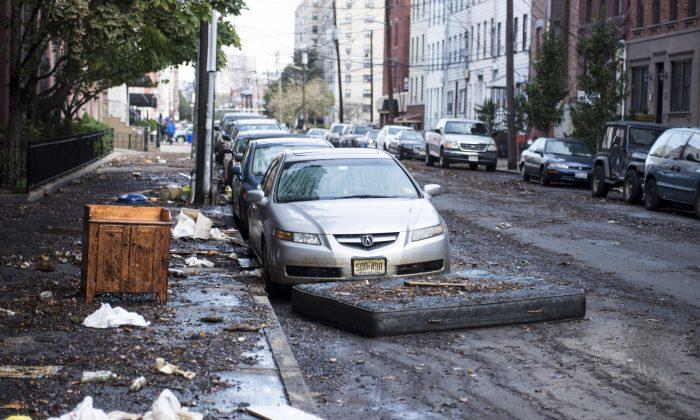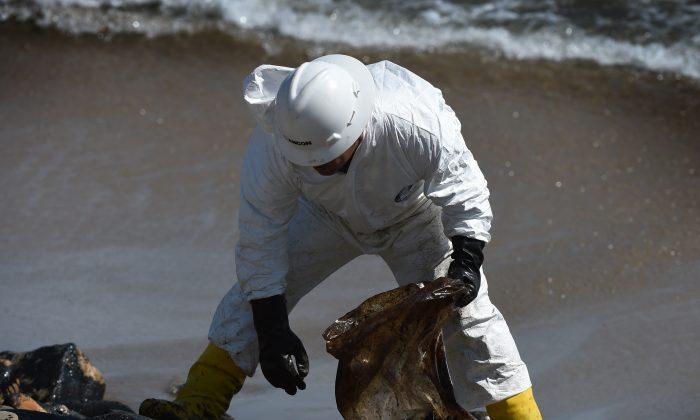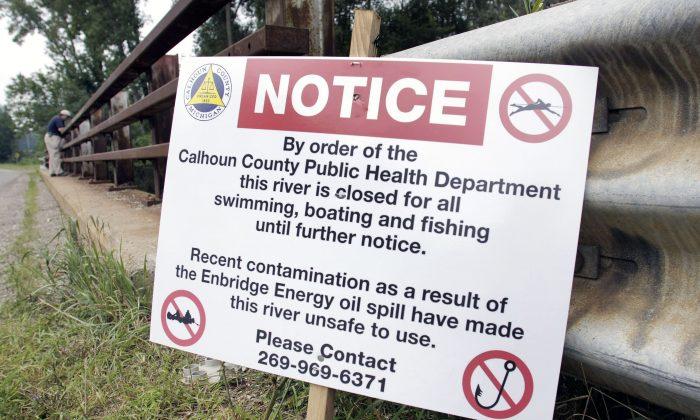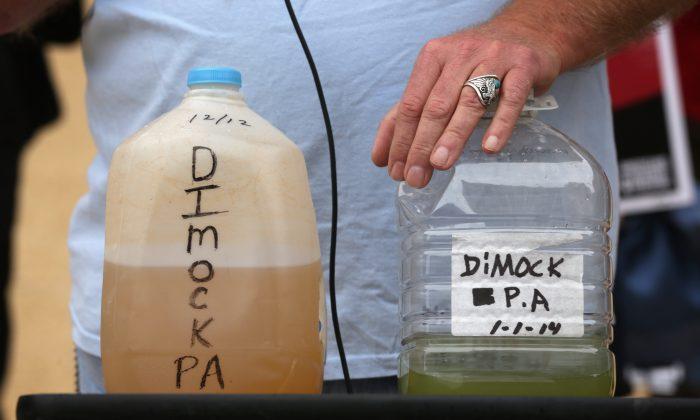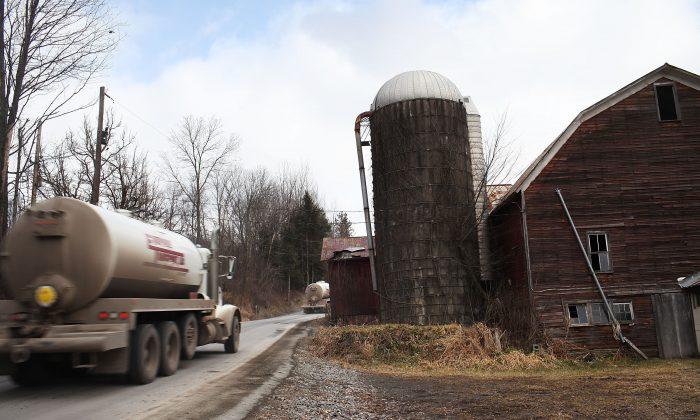I live in the Northeast, and now, climate change is personal.
It’s been almost a year since Superstorm Sandy submerged my city, Hoboken, N.J., and my home, in toxic floodwaters laden with oil, sewage, and chemicals.
On that horrific night, my family and I gathered in the dark with neighbors on the top steps of our building, stranded in a water world as winds roared and storm waters surged. Though we live a half-mile from the harbor, a wall of water flowed up our street—it felt like a sci-fi movie—and blew our basement door off its hinges. Six feet of water rushed in, knocking out the building’s heating and electrical systems, ruining a lifetime of uninsured personal possessions and doing some $50,000 in damage.
The next day, streets flowed with oily black water and the National Guard arrived with lifeboats to save thousands of stranded Hobokenites. The flooded PATH tunnels to New York halted trains used daily by 30,000 commuters. In just hours, Sandy brought city life to a shuddering halt, flooding coastal communities from Maryland to Maine.
But Sandy tells just part of the story of intensifying storms in the Northeast. The magnitude and regularity of freakish flashflood-causing thunderstorms here have grown exponentially in recent decades. In August 2013 alone, flashfloods struck the towns of Waterville, Maine; Torrington, Conn.; Cranston, R.I.; and Tewksbury, N.J, and record rains fell in Washington, D.C. in October. The heaviest of these sudden deluges can dump a foot of rain in just hours, inundating homes and businesses that lack flood insurance because they are located on high ground not historically prone to flooding.
Heavier, More Frequent Rain
Climate change is the cause. According to the National Oceanic and Atmospheric Administration, between 1958 and 2011 the amount of rain falling in heavy downpours increased by an astounding 74 percent in the Northeast, turning rivers and creeks into torrents, tearing up undersized culverts, and wrecking streamside roads.
By 2100, scientists expect New England’s precipitation to increase by 10 percent in spring and summer, 15 percent in fall, and 20 to 60 percent in winter. By then, New York City may be submerged in a 100-year flood once per decade.
In January, a congressional report concluded that severe weather is now the new U.S. norm, with the frequency and intensity of droughts, heat waves, downpours, and floods increasing as a result of human-induced climate change caused by burning fossil fuels.
The science is simple: in a warming world, the atmosphere holds more water, bringing frequent, heavier rainfall—6 percent more nationwide than a century ago. The trouble is that severe thunderstorms and flashfloods are random and hard to predict.
Adapting Near the Coast
So in the storm-prone Northeast, we must adapt and plan for flash flooding. That means redesigning our infrastructure—reinforcing or removing aging dams and enlarging stream culverts, and fortifying our coasts with dunes, oyster reefs, or sea walls. We must avoid development on vulnerable shorelines, and make the painful decision in some cases to surrender once valuable coastal and stream floodplain properties back to nature.
With one-third of the U.S. population living in Northeast coastal areas between Boston and Philadelphia, such infrastructure and community adaptation in advance of rapid climate change will be economically costly. However, we must act fast. I can tell you firsthand—as someone who experienced Superstorm Sandy—it will be far more costly and tragic if we fail to act now, before oceans rise further and severe weather worsens.
And we must—as the world’s second largest carbon contributor to climate change—alter our energy policies, accelerating our transition from fossil fuels to clean, renewable energy sources.
Nationwide, we need a strong, sustained, and well-coordinated effort between federal, state, and municipal governments, businesses, nonprofits, and the public to lower emissions in each of the four largest greenhouse gas-producing sectors: electric power, buildings, transportation, and industry.
In the populous Northeast, we especially need to use zoning, building codes, and government incentives to encourage construction and retrofitting of energy-efficient buildings, to discourage sprawl, and create low-emission transportation alternatives.
We must make climate change a top priority. We must act as if our lives—and the lives of every living thing on Earth—depend on it—because they do.
Sharon Guynup’s writing has appeared in Smithsonian, The New York Times Syndicate, Scientific American, The Boston Globe, and nationalgeographic.com. © www.blueridgepress.com 2013
